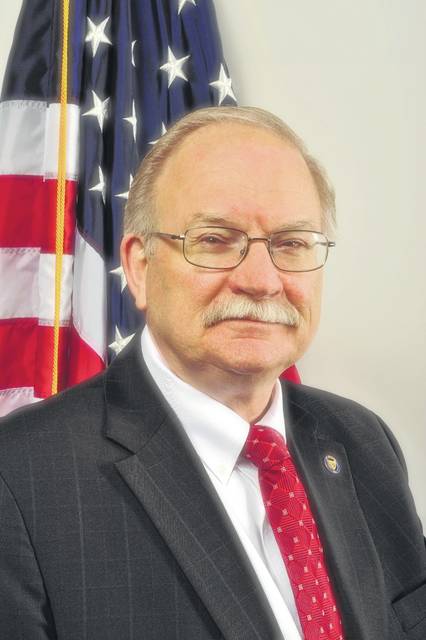
City Manager Mark Cundiff and I had the opportunity to hear a presentation on the 2020 Decennial Census this past week, and I thought that some of the information we received might be good to pass along. As most of you know, Article I, Section 2 of the U.S. Constitution mandates a headcount every 10 years of everyone residing in the 50 states, Puerto Rico, and the Island Areas of the United States (Guam, US Virgin Islands, American Samoa, and the Commonwealth of the Northern Mariana Islands).
This includes people of all ages, races, ethnic groups, citizens, and noncitizens. It even includes those who happen to be incarcerated in the Shelby County Jail on April 1, 2020.
The first census was conducted in 1790. A census has been conducted every 10 years since, even in wartime.
The population totals from the census determine the number of seats each state has in the House of Representatives. States also use the totals to redraw their legislative districts (in Ohio that includes the Ohio House of Representatives and the Ohio Senate). Sidney will use the data to redraw the boundaries of the four wards.
The next census occurs in 2020. April 1, 2020, is “Census Day” for institutions (including senior living centers, residential treatment centers, and jails/prisons.)
According to the law, the U.S. Census Bureau must submit state population totals to the President of the United States on or before Dec. 31, 2020.
In addition to legislative districts, population totals also affect funding within communities. Data collected in the census helps decision makers know how your community is changing. Approximately $675 billion in federal funding is distributed to communities each year, based on population. As a result, not counting one or more persons can dramatically impact funding.
There are some important changes to the Census process in 2020. The Census Bureau is building a more accurate address list and automating their field operations. For the first time ever, you will be able to respond online, by phone, or by mail. The Census Bureau will use data that the public has already provided to cut down on in-person follow-up visits to non-responding households.
It is important to note that all responses to Census Bureau surveys as well as the Census itself are confidential and protected by law (Title 13 of the U.S. Code). Under this law, the Census Bureau is required to keep respondent information confidential. The Census Bureau cannot share a respondent’s personal information with immigration enforcement agencies (i.e., ICE), law enforcement agencies (i.e., the FBI or police); or allow it to be used to determine eligibility for government benefits. The results from any census or survey conducted by the Census Bureau are reported in statistical format only.
Individual records from the decennial censuses are, by law (Title 44, U.S. Code), confidential for 72 years. In addition, under Title 13, U.S. Code, all Census Bureau employees swear a lifetime oath to protect respondent data. It is a felony for any Census Bureau employee to disclose any confidential census information during or after employment, and there are stiff penalties for violating the law (up to 5 years imprisonment and/or a fine of $250,000).
In closing, there are more than fifty different ways data collected by the Census Bureau is important. Here are just some of them:
• Drawing federal, state, and local legislative districts;
• Attracting new businesses to state and local areas;
• Distributing over $675B annually in federal funds and even more in state funds;
• Forecasting future transportation needs for all segments of the population;
• Planning for hospitals, nursing homes, clinics, and the location of other health services;
• Forecasting future housing needs for all segments of the population;
• Designing public safety strategies;
• Development of rural areas;
• Analyzing local trends;
• Estimating the number of people displaced by natural disasters;
• Creating maps to speed emergency services to households in need of assistance;
• Delivering goods and services to local markets;
• Designing facilities for people with disabilities, the elderly, or children;
• Planning future government services;
• Publishing economic and statistical reports about the United States and its people;
• Facilitating scientific research;
• Developing “intelligent” maps for government and business;
• Providing proof of age, relationship, or residence certificates provided by the Census Bureau;
• Distributing medical research funding;
• Planning and research media may need as background for news stories;
• Planning budgets for government at all levels;
• Spotting trends in the economic well-being of the nation;
• Planning for public transportation services;
• Planning health and educational services for people with disabilities;
• Establishing fair market rents and enforcing fair lending practices;
• Planning urban land use;
• Understanding labor supply;
• Assessing the potential for spread of communicable diseases;
• Making business decisions;
• Understanding consumer needs;
• Planning for faith-based organizations;
• Locating factory sites and distribution centers;
• Setting a standard for creating both public and private sector survey instruments;
• Evaluating programs in different geographic areas;
• Providing genealogical research;
• Planning for school projects;
• Developing adult education programs;
• Researching historical subject areas; and,
• Determining areas eligible for housing assistance and rehabilitation loans.
There is additional information online (www.census.gov/2020census). The early release of this information will hopefully help residents realize the importance of the census locally. I’ll be providing additional information about the census in the future. I would encourage residents to complete the simple questionnaire upon receipt and return it, or if you prefer, to return the information on line.


